I've been reading about the Roman Invasion of Scotland (Caledonia) lately in a book called 'The Eagle and the Bear - A new history of Roman Scotland', by John H Reid, and its given me the motivation to visit more of our Roman sites of late.
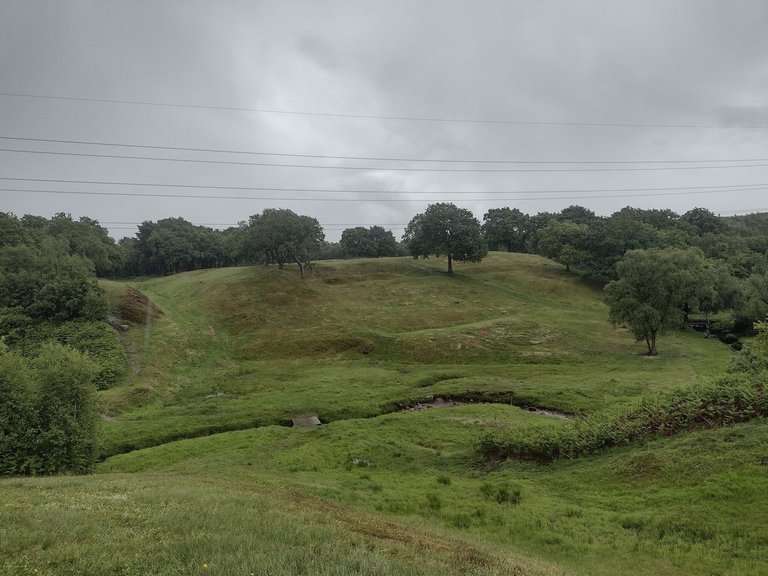
Today I visited a site called Rough Castle. Its near Falkirk, and was a location of one of the Forts that stood right on the wall.
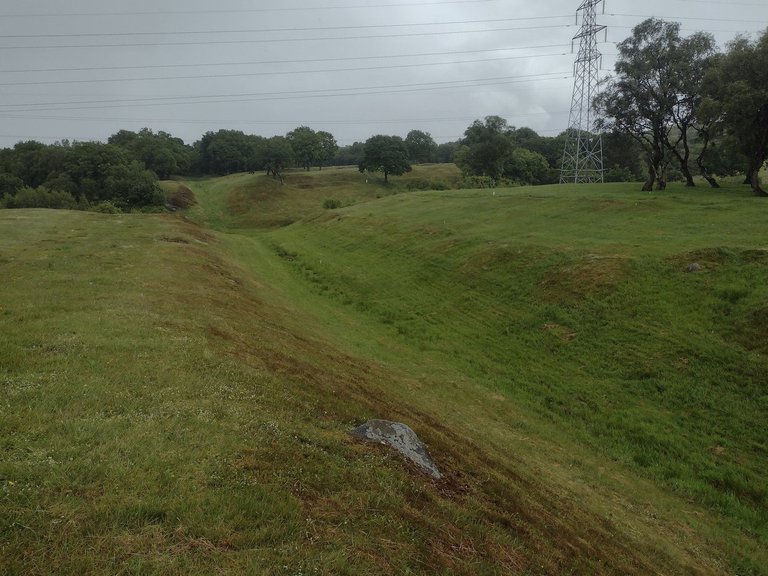
The Antonine Wall runs across Central Scotland from the Clyde to the Forth, and was built in the AD 140s, around 20 years after Hadrian's Wall was built across the top of England. The Antonine wall was more of defensive ditch with turf ramparts, compared to Hadrian's Wall, which is actually a stone wall. The pic above gives a good idea of what it generally looks like these days.
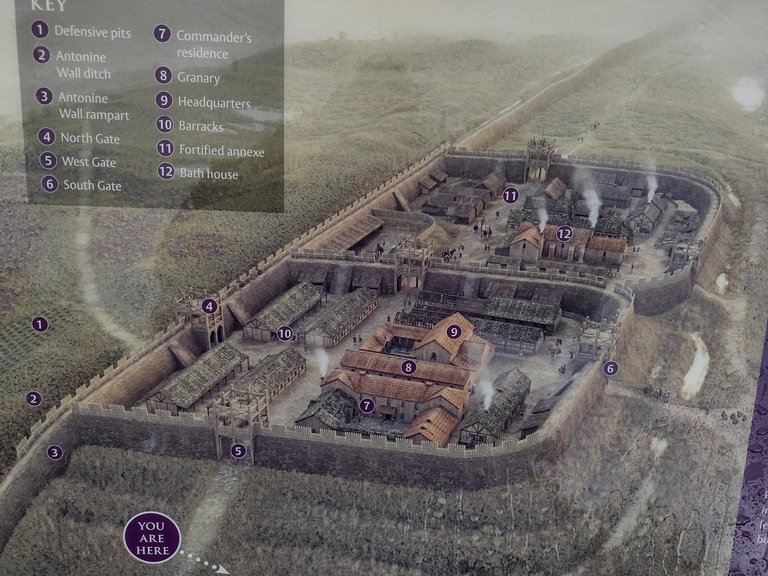
You cant actually see that much at the Rough Castle site these days (its 1900 years old after all) and need a good imagination. However the info boards help, and the pic above (which is from one of the boards) gives a good idea of the fort. The Wall runs along the left hand side. You can still see the defensive ditches that surround the fort, fairly clearly.
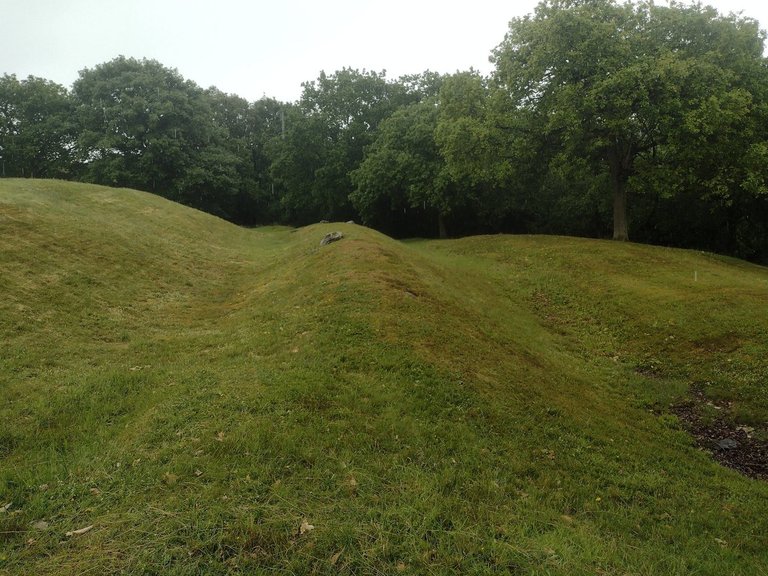
Thats the defensive ditches in the pic above. Attackers would have had to have run up through those, from right to left, with the soldiers on the fort wall having quite a height advantage.
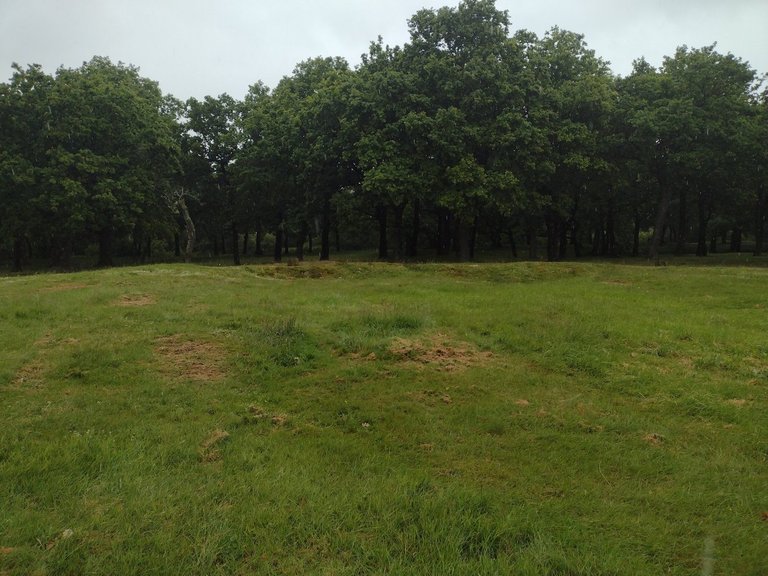
The fort covers a decent sized area (maybe 4-6 football fields). As said, there is not so much to see for the majority of it, although there are a lot of info boards around explaining where everything is.
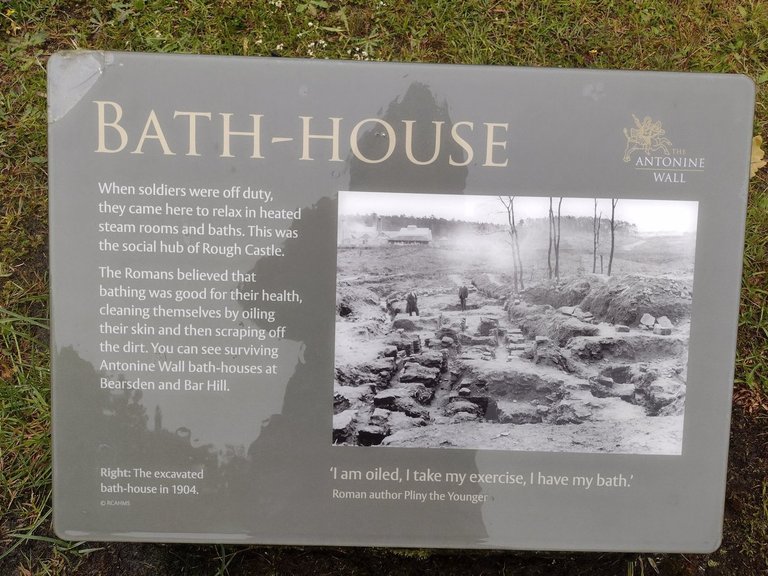
However, the really interesting thing is that there is still a fair amount of stuff left. Some of it was excavated and then covered back over to protect it from the weather and vandalism (yes, sadly some earlier items that was left uncovered was actually vandalised). So its simply that the remains are underground !
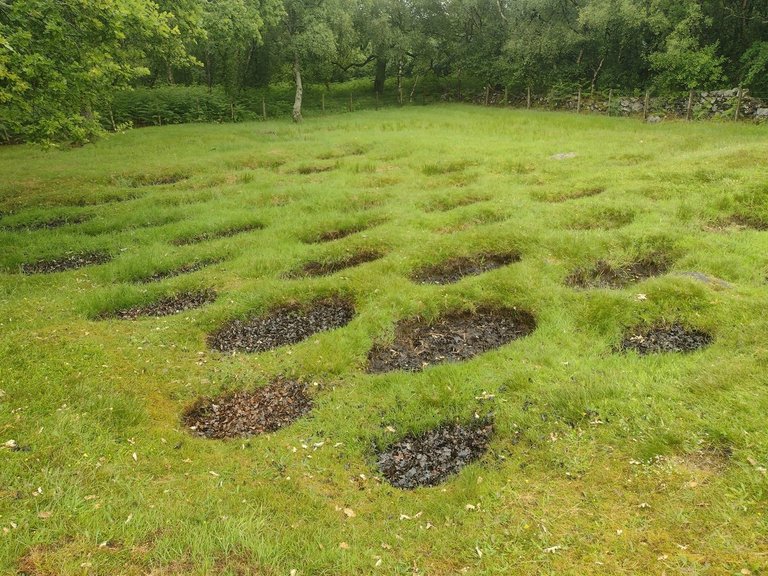
Rough Castle is quite famous for the feature above. These pits lie on the north side of the wall (so on the 'enemy' side). The wall had a set of nested defensive features, including pits like these. They would have been quite deep and contained stakes - so ending up in one of these would not have been pleasant. They are spaced such that it is impossible to run in a straight line at the wall, from there you would then have to run up and over the first rampart, down into the main ditch and then you have a steep climb up the second rampart, just to get to the bottom of the fort wall. It would have been near impossible (although wall breeches did occur).
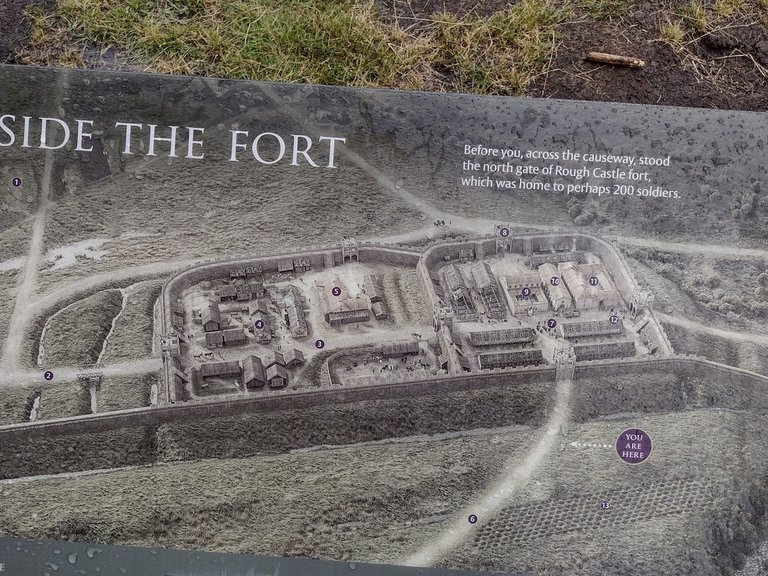
Thats another view of the fort above from one of the other info boards - you can see the pits in the bottom right hand corner.
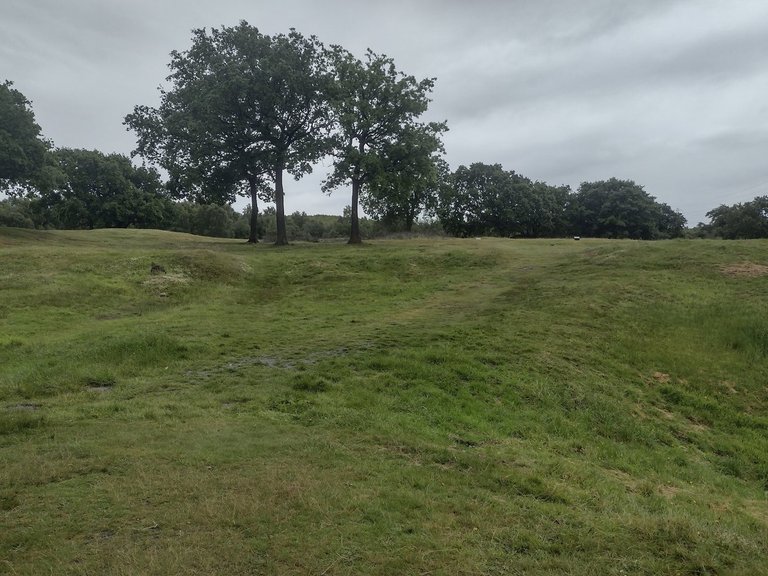
The pic above shows the old road that led across the wall into the fort (via a fortified gate).
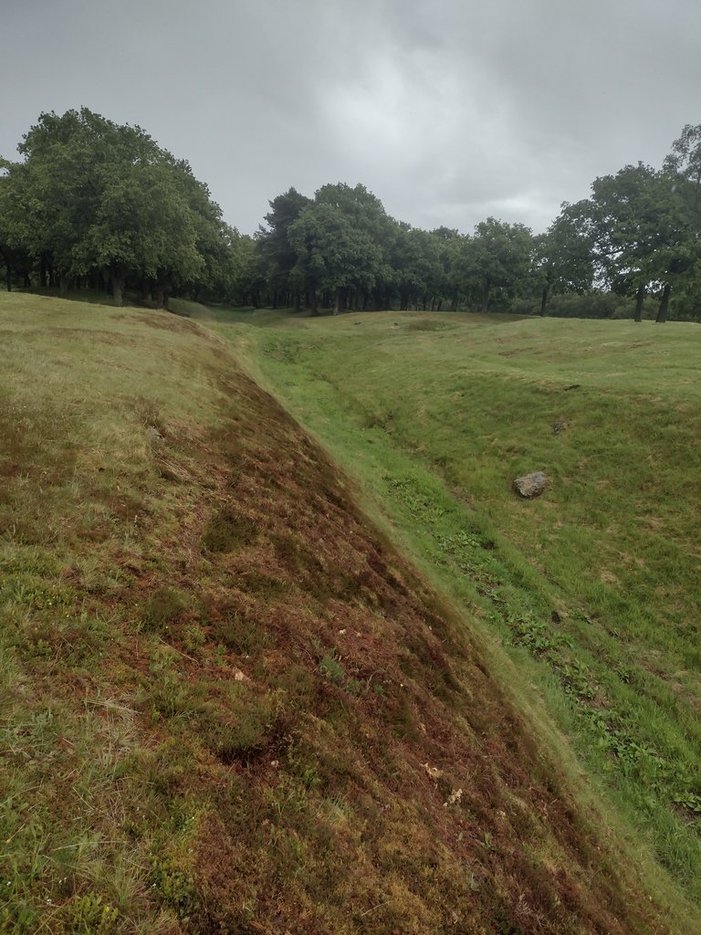
I have been to this site once before very briefly and didnt get to explore it all, so it was great to go back today and take my time to take it all in, even if it was raining solidly the whole time (yes, I got soaked !).
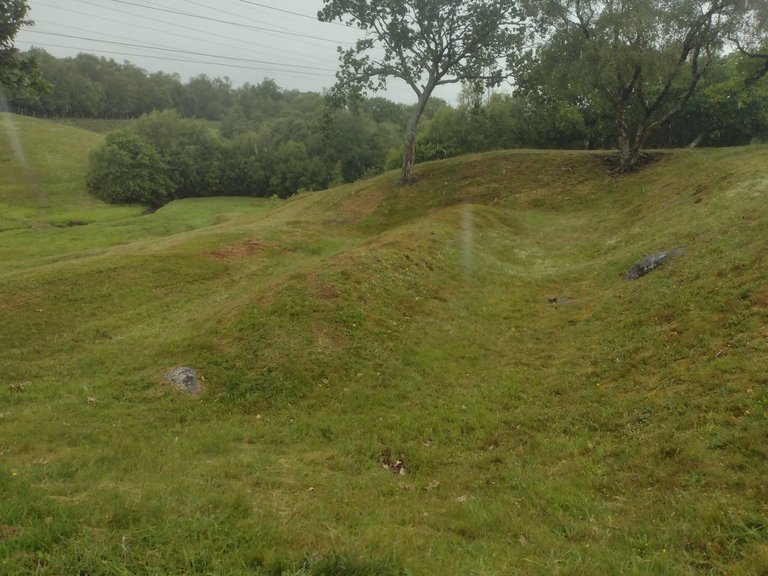
The excavations here have produced some very nice finds including latin inscribed stones, many of which are now held in the museum of Scotland. We are actually going there in sunday, because it is in Edinburgh where we live, so I'll aim to check out the section that houses those. It will be interesting to relate them back to the site.
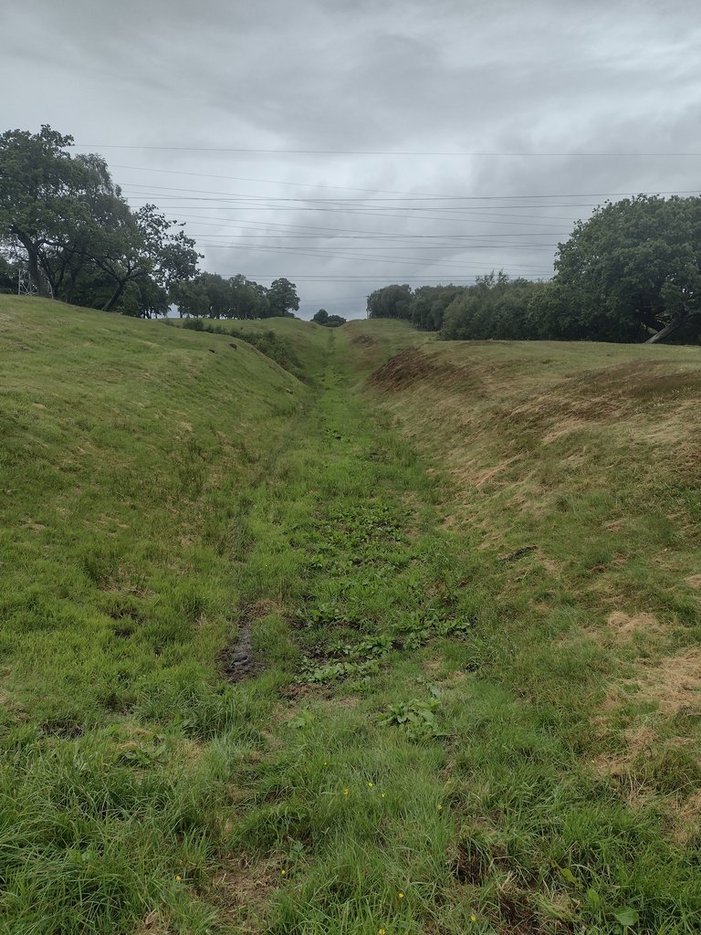
I know it does not look like much, but putting it all together with the information boards, the book I'm reading and the other sites I've been visiting of late is quite cool. I've been quite enjoying this, and so I think I'll keep on visiting the various sites we have around these parts. I've very much been enjoying it !
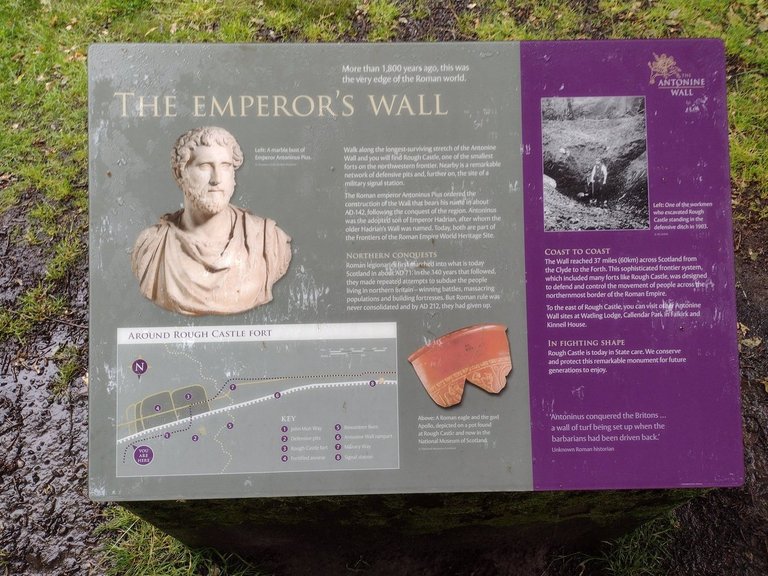
Well, I have to say that as wet as it was, I still really enjoyed it. I got a good couple of hours worth of exercise and I enjoyed taking in the site and reading about it on all the boards. Well worth the visit - and how about those pits !!!
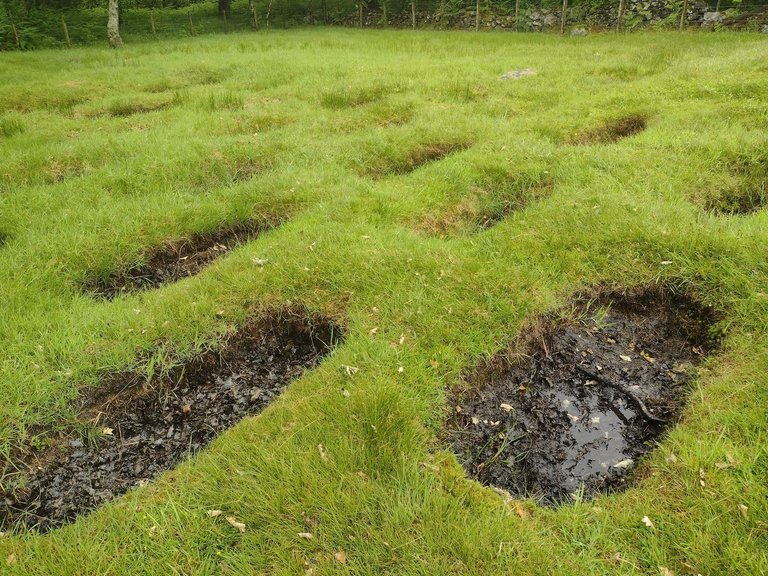
Posted Using InLeo Alpha
Hi @hoosie, Thank you for participating in the #teamuk curated tag. We have upvoted your quality content. For more information visit our discord https://discord.gg/8CVx2Am
Congratulations, your post has been added to the TravelFeed Map! 🎉🥳🌴
Did you know you have your own profile map?
And every post has their own map too!
Want to have your post on the map too?
- Go to TravelFeed Map
- Click the create pin button
- Drag the marker to where your post should be. Zoom in if needed or use the search bar (top right).
- Copy and paste the generated code in your post (any Hive frontend)
- Or login with Hive Keychain or Hivesigner and click "create post" to post to Hive directly from TravelFeed
- Congrats, your post is now on the map!
PS: Pinmapple is closing downcontinuing Pinmapple's legacy. You can also import your previous Pinmapple posts to the TravelFeed map.Opt Out and together with @worldmappin we are
For real I've always been curious about Roman history, especially how they built those walls. It must have been quite an experience to explore Rough Castle and see those ancient defenses up close. I wish to visit one day 😍😍😍 !LUV
It was pretty impressive - I really liked it, and will definitely go again.
Wow would love to see you share the next one
Holy cats! 1900 years... That's just insane. So impressive though. Your posts lately have made me think of that movie King Arthur. The one with Clive Owen I think.
Yes, its very much like that. From memory, that film is sort of set towards the end of Roman rule here or just after it, and it builds in elements like the walls and the tribes that were around. So yes, it fits perfectly.
That's awesome!
Congratulations, your post has been added to WorldMapPin! 🎉
Did you know you have your own profile map?
And every post has their own map too!
Want to have your post on the map too?
I never realised the Antonine Wall was so developed - I always thought it was just a small ditch and palisade.
I ended up looking on the Antonine Wall website to find out who was based there, one of my slightly more eccentric interests is researching Roman auxilia units to understand where they came from and where they were based. It seems Rough Castle was garrisoned by a unit from what is now Belgium, the Sixth Nervian Cohort.
Yes, there are a ton of forts around here. The one here in Edinburgh at Crammond was huge, and had a port to allow supplies to be shipped in.
I also find the details of who was around quite interesting. The info boards also talked about the Nervians, and they also name their commander Flavius Betto due to some of the inscribed stone work left behind. Its amazing that we know his actual name after all these years. I'm hoping to see those carvings tomorrow, because there are in the museum here in Edinburgh !
You can read a little more about them in the extra pics I've uploaded below (pics of info boards at the site).
It is a place with a lot of history and it is amazing everything that it keeps in it. You are very brave to visit him.
It really was very nice to visit - I loved it !
@tipu curate
Upvoted 👌 (Mana: 17/57) Liquid rewards.
Many thanks - its appreciated !
Congratulations @hoosie! Your post brought a smile to the TravelFeed team so we have sent you a smiley. Keep up the good job. 🙂
Thanks for using TravelFeed!
@for91days (TravelFeed team)
PS: Why not share your blog posts to your family and friends with the convenient sharing buttons on TravelFeed?